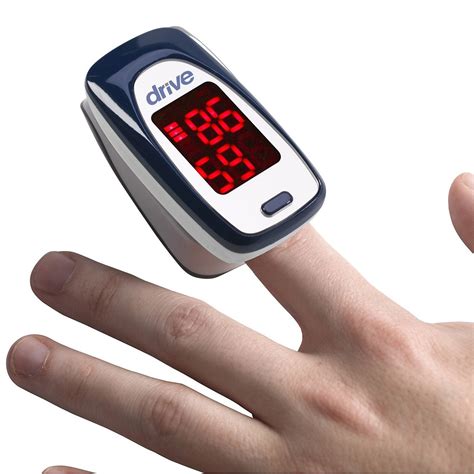Pulse Oximeters - Essential Health Monitoring Devices
Pulse Oximeters FAQ
Can you use a pulse oximeter at home?
A healthcare provider may also recommend you use a pulse oximeter at home. Using a pulse oximeter can help you see when your blood oxygen level is too low, which means your body is working too hard to properly function and you may need to reach out for care or advice. How Does a Pulse Oximeter Work?
How does a pulse oximeter work?
In pulse oximetry, small beams of light pass through the blood in your finger, measuring the amount of oxygen. According to the British Lung Foundation, pulse oximeters do this by measuring changes in light absorption in oxygenated or deoxygenated blood. This is a painless process.
How accurate is a pulse oximeter?
Prescription-based pulse oximeters are usually pretty accurate. Most devices give a reading that is 2% to 4% higher or lower than your actual blood oxygen level. For example, if your oxygen saturation is 94% on your pulse oximeter, it may be actually anywhere from 90% to 98%.
How does a pulse oximeter monitor oxygen saturation?
The absorbed light is processed by a proprietary algorithm in the pulse oximeter to display a saturation value. In most developed countries, pulse oximetry is the standard of care to use pulse oximetry to monitor oxygen saturation for patients receiving anesthesia.
Why should you use a pulse oximeter?
Pulse oximetry can help with earlier detection of silent hypoxia, where people have low oxygen levels in the absence of significant shortness of breath. This can help ensure more timely hospital treatment if required. Who should use a pulse oximeter? The COVID Oximetry @home pathway should be available to people who are:
How long does a pulse oximeter take?
The reading takes time to steady. Keep the oximeter in place for at least a minute, or longer if the reading keeps changing. Oxygen saturation - This is your oxygen levels in your blood which will be picked up by your pulse oximeter as a percentage.
What is a normal pulse oximeter reading?
Pulse - This is your pulse rate which will be picked up by your pulse oximeter as beats per minute. Record the highest result once the reading has not changed for at least 5 seconds. Normal limits are between 95-100%. Your first measurement is your baseline and should be taken on the first day you get your pulse oximetry.
What is pulse oximetry?
Pulse oximetry is a well-established technique used in healthcare to take a non-invasive measurement of the blood-oxygen level of a patient. This measurement can help with the early detection of signs of deterioration. The value produced is just one part of the range of measurements that clinicians use to decide on the most appropriate treatment.
Pulse Oximeters References
If you want to know more about Pulse Oximeters, consider exploring links below:
What Is Pulse Oximeters
- https://www.england.nhs.uk/coronavirus/wp-content/uploads/sites/52/2022/02/pulse-oximeter-easy-read-2022-digital.pdf
- https://www.healthline.com/health/pulse-oximetry
- https://www.businessinsider.com/guides/health/what-is-a-pulse-oximeter
- https://www.gov.uk/guidance/the-use-and-regulation-of-pulse-oximeters-information-for-healthcare-professionals
- https://www.health.com/pulse-oximeter-7109962
Explore Related Topics
Is Oxygen Therapy at Home a Safe Option During an Asthma Attack?
Debate the safety and efficiency of using supplemental oxygen for managing acute asthma symptoms at home.
